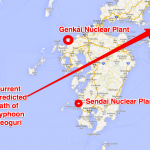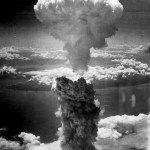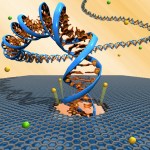nuclear
At the Center for Public Integrity, a five-part investigative series on safety at the nation’s nuclear facilities finds that workers can and do suffer serious injuries, yet the Department of Energy typically imposes only minimal fines for safety incidents and companies get to keep a majority of their profits, which does little to improve working conditions. Reporters estimated that the number of safety incidents has tripled since 2013.
For example, in 2009, the chair of a safety committee at Idaho National Laboratory told high-ranking managers that damaged plutonium plates could put workers…
At Reveal, Jennifer LaFleur writes about the U.S. veterans who witnessed the country’s many nuclear weapon tests, the health problems they’ve encountered in the decades since their service, and their fight for compensation. One of the “atomic veterans” LeFleur interviewed — Wayne Brooks — said: “We were used as guinea pigs – every one of us. They didn’t tell us what it was gonna do to us. They didn’t tell us that we were gonna have problems later on in life with cancers and multiple cancers.” LaFleur writes:
All of the atomic vets were sworn to secrecy. Until the secrecy was lifted decades…
Update:
The new forecast track of Neoguri is shown above as well as the location of two nuclear power plants.
The forecast track has moved south, and is now in a very good (and here good means bad) position to strike the Sendai nuclear power plant very directly. Keep in mind that this forecast may change.
On Tuesday mid day UTC the storm will likely be in the later phases of a turn to the right, aiming roughly at the Sendai plant. At this point maximum wind speed near the center of the storm will likely be about 90 mph, which puts the storm in the middle of the Category One range. That…
Three years after Japan's earthquake and tsunami led to the Fukushima Daiichi nuclear disaster, concerns persist about health effects while the cleanup poses ongoing health and safety challenges.
Living on Earth reports on a lawsuit filed by several US Navy sailors against the Tokyo Electric Power Company (Tepco). The sailors were part of a relief operation, and their ship sailed into a plume of radioactive dust. Their attorney, Charles Bonner, told Living on Earth that many sailors are now suffering from “leukemias, ulcers, brain tumors, testicular cancers, dysfunctional uterine bleeding,…
"Ours is a world of nuclear giants and ethical infants. We know more about war that we know about peace, more about killing that we know about living." -Omar N. Bradley
Nuclear physics is one of the most daunting, emotionally charged phrases in all of science. You can hardly say the words without the image of a mushroom cloud popping into most people's heads, followed by the devastations of radiation sickness and lingering radioactivity.
Image credit: National Archives image (208-N-43888), Charles Levy, of the Nagasaki bomb.
But -- as a physicist -- that's not what I think of at all.
Think…
"I see a lot of new faces. But, you know the old saying, 'out with the old, in with the nucleus.'" -The Simpsons
Looking around the Universe today, there's no doubt that there's plenty of hydrogen and helium around; after all, it's the nuclear fusion of hydrogen into helium that powers the vast majority of stars illuminating the entire cosmos!
Image credit: ESA/Hubble, NASA and H. Ebeling.
But here on Earth, hydrogen and helium are only a small part of the world we inhabit. By mass, hydrogen and helium combined make up far less than 1% of the Earth, and even if we restrict ourselves…
“We are much closer today to being able to send humans to Mars than we were to being able to send men to the moon in 1961, and we were there eight years later. Given the will, we could have humans on Mars within a decade.” -Robert Zubrin
Of all the planets in the Solar System beyond our own, none has captured our imagination quite like Mars has.
Image credit: NASA, via http://photojournal.jpl.nasa.gov/jpeg/PIA02570.jpg.
From science-fiction fans to scientists and everyone in between, our understanding of the red planet is presently greater than it ever has been in the past. With multiple…
"Life exists in the universe only because the carbon atom possesses certain exceptional properties." -James Jeans
Here on Earth, every living thing is based around four fundamental, elemental building blocks of life: hydrogen, oxygen, nitrogen and, perhaps most importantly, carbon.
Image Credit: Robert Johnson / University of Pennsylvania.
From diamonds to nanotubes to DNA, carbon is indispensable for constructing practically all of the most intricate structures we know of. Most of the carbon in our world comes from long-dead stars, in the form of Carbon-12: carbon atoms…
The Astrophysicist, when he has time, will have something to say about his reading of the physics of the material Tom Whipple sums up.
This situation however seems to be changing following a lengthy interview with a fellow out in Berkeley, California by the name of Robert Godes of Brillouin Energy. He has been working in this field for the last ten years and says that he not only has a reliable heat-producing device, but also understands the physics behind it - which he calls the Quantum Fusion Hypothesis. He says that this theory of just how low-energy nuclear reactions work has allowed…
Note, I'm horrified to realize I inadvertantly left out the link to Rhagavan's piece - SO SORRY about that, and please do click through - it is well worth a full read.
Barath Rhagavan has a superb article about the conversion of many climate scientists to support of nuclear power and the reasons this is problematic. These match my own major objections to nuclear as a response. As serious as the environmental impact of failure is, that's not the single biggest issue I see. Even if I thought the siting would avoid any future climate related disasters (I don't), the main issue is the…
In the comments to Romm Echoes Groundless Cell Phone/Cancer Fears? we've degenerated into an argument about the safety of nuclear versus solar power ("which do you think has killed more people: radiation from Fukushima, or solar-voltaic installers falling from ladders?" was my question. It is a trick question, of course, because no-one has died from Fukushima as far as I know. But the correct question, of course, is deaths per unit of 'lectric generated). MV, beng something of a spoilsport (just joking, don't worry) pops the bubble by pointing to someone who has actually worked some numbers…
In comments to yesterday's post about precision measurements, Bjoern objected to the use of "quantum mechanics" as a term encompassing QED:
IMO, one should say "quantum theory" here instead of "quantum mechanics". After all, what is usually known as quantum mechanics (the stuff one learns in basic courses) is essentially the quantization of classical mechanics, whereas QED is the quantization of classical electrodynamics, and quantum field theories in general are quantizations of classical field theories. I think saying "quantum mechanics" when one talks about something which essentially has…
I've been very grateful for my colleague Greg Laden's regular updates of the raw discussions on the Fukushima situation, but it is nice to have a coherent, visual overview, and Nicole Foss has provided another wonderful analysis at The Automatic Earth. It is very hard to synthesize all the information, because there is so much and so many conflicting reports, so it is helpful to have it all pulled together.
On April 17th the same site had the following radiation levels recorded for units 1-3:
Reactor 1
Dry Well: 121.4 Sv/hr
Suppression chamber: 97.5 Sv/hr
Reactor 2
Dry Well: N/A…
In much of the reporting I've seen on the Fukushima nuclear disaster, the plant workers are an anonymous, if much-praised, group. The New York Times' Hiroko Tabuchi digs deeper to tell us more about who some of these workers are, and what their experiences can tell us about occupational health and safety in Japan. He begins with the story of 55-year-old Masayuki Ishizawa, who was at the plant when the earthquake struck and had to plead with the security guard to be let out the of the complex to flee the tsunami:
Mr. Ishizawa, who was finally allowed to leave, is not a nuclear specialist; he…
The Oil Drum has a well-referenced, thoughtful summary of the present situation at Fukushima - bad and getting worse as it gets harder and harder for workers to get close to the facility. The word "entombment" has been mentioned - which may be the only viable outcome. More than a million Japanese people risk losing their homes for a very long time, if not for good.
There are a lot of discussions of the future of nuclear power out there. Most of them don't assume declining other energy resources, however. The emerging assessment I see is that while modern nuclear plants are much safer,…
A few of the recent pieces I've liked:
T. Christian Miller of ProPublica and Daniel Zwerdling of NPR: Aftershock: The Blast That Shook Psycho Platoon
Susan Milius in Science News: Backup Bees
Deborah Blum at Speakeasy Science: The Radium Girls (Part II, Part III)
Frank N. Von Hippel on the New York Times Opinion Page: It Could Happen Here ("Nuclear power is a textbook example of the problem of 'regulatory capture' -- in which an industry gains control of an agency meant to regulate it.")
Michelle Andrews for Kaiser Health News: Demand Grows for Palliative Care
Mitsuru Obe reports in today's Wall Street Journal that three workers at the Fukushima Daiichi nuclear power plant have been exposed to moderately high levels of radiation, due to contact with radiactive water on the ground. Their reported exposures of 170 to 180 millisieverts are less than the new emergency limit of 250 millisieverts, but more than the usual limit of 100 millisieverts for workers' exposure during recovery efforts.
This follows an earlier report from the New York Times that five workers have died since the quake and 22 more injured, 11 of those in a hydrogen explosion. Those…
From Time/CNN:
The ongoing struggle to snuff out the nuclear crisis occurred amid mounting confusion about key elements of risk now in play. At a hearing in Washington on Wednesday, the chairman of the U.S. Nuclear Regulatory Commission (NRC), Gregory Jaczko, called the radiation levels at one of the plant's units "extremely high." He added that "for a comparable situation in the United States, we would recommend evacuation for a much larger radius than is currently being provided in Japan." And he said his information suggested that there was no water left in the pool containing the spent…
The workers remaining at Japan's Fukushima Daiichi Nuclear Power Station are braving extremely risky conditions as they try to avert a nuclear catastrophe. They are working to keep fuel rods - both those inside reactors and in the spent rods stored in ponds - cool enough to avert a Chernobyl-type meltdown, which would spew radioactive particles across the region. The most recent reports state that there are 50 workers remaining at the power station; all others have been evacuated as radiation levels have risen.
The New York Times' Keith Bradsher and Hiroko Tabuchi describe the workers'…




